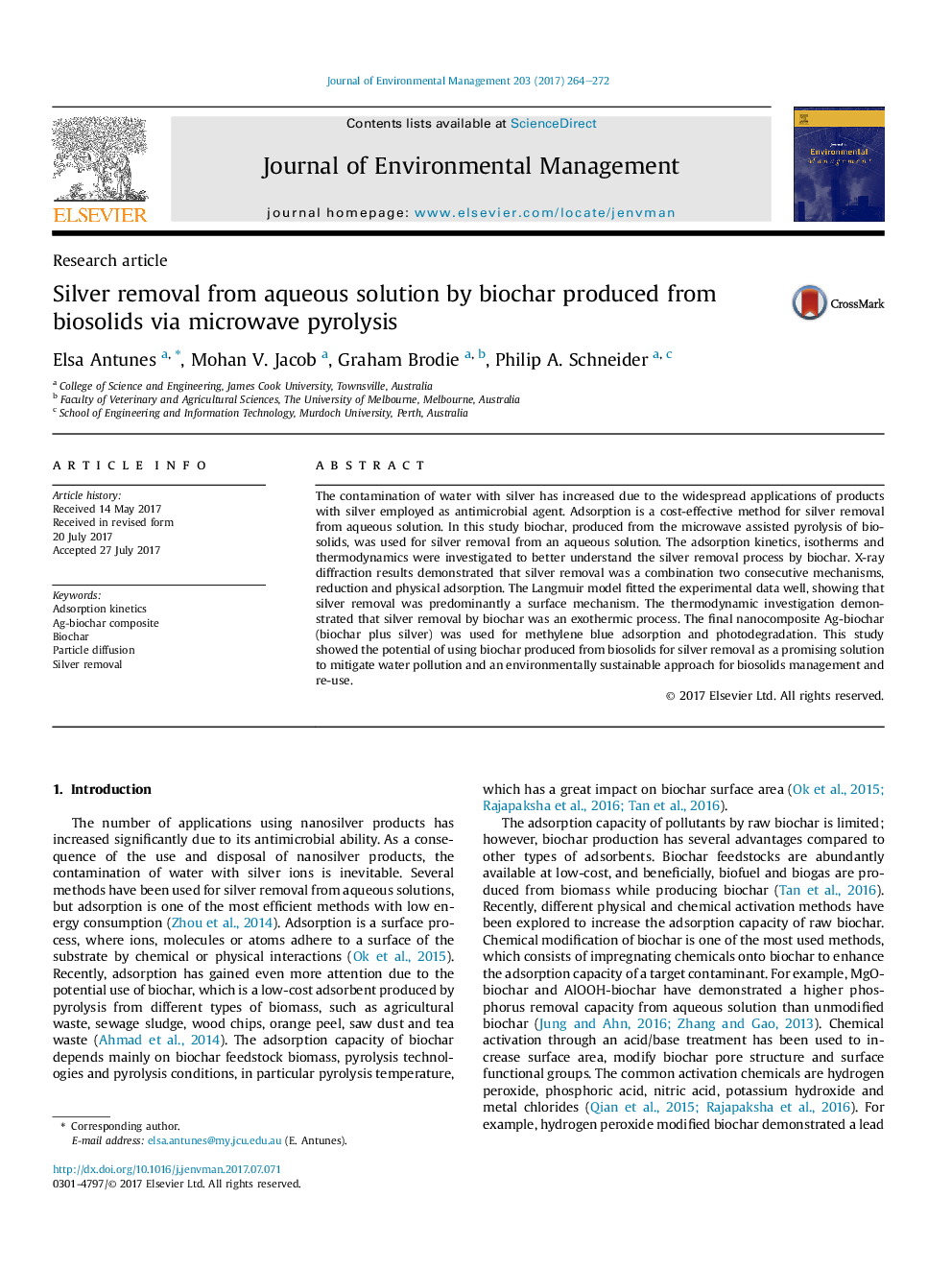| Article ID | Journal | Published Year | Pages | File Type |
|---|---|---|---|---|
| 5116512 | Journal of Environmental Management | 2017 | 9 Pages |
Abstract
The contamination of water with silver has increased due to the widespread applications of products with silver employed as antimicrobial agent. Adsorption is a cost-effective method for silver removal from aqueous solution. In this study biochar, produced from the microwave assisted pyrolysis of biosolids, was used for silver removal from an aqueous solution. The adsorption kinetics, isotherms and thermodynamics were investigated to better understand the silver removal process by biochar. X-ray diffraction results demonstrated that silver removal was a combination two consecutive mechanisms, reduction and physical adsorption. The Langmuir model fitted the experimental data well, showing that silver removal was predominantly a surface mechanism. The thermodynamic investigation demonstrated that silver removal by biochar was an exothermic process. The final nanocomposite Ag-biochar (biochar plus silver) was used for methylene blue adsorption and photodegradation. This study showed the potential of using biochar produced from biosolids for silver removal as a promising solution to mitigate water pollution and an environmentally sustainable approach for biosolids management and re-use.
Related Topics
Physical Sciences and Engineering
Energy
Renewable Energy, Sustainability and the Environment
Authors
Elsa Antunes, Mohan V. Jacob, Graham Brodie, Philip A. Schneider,
